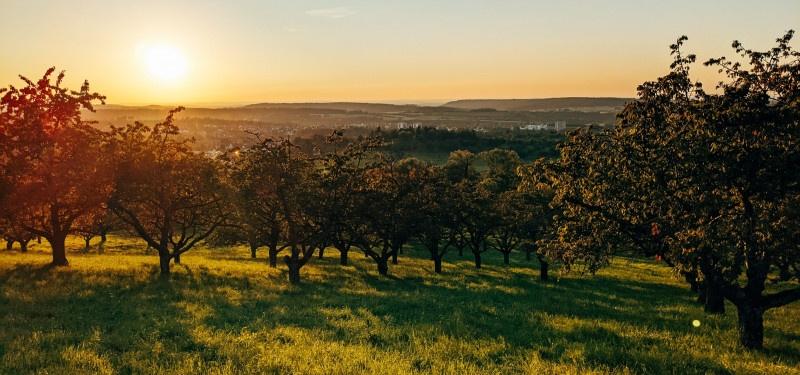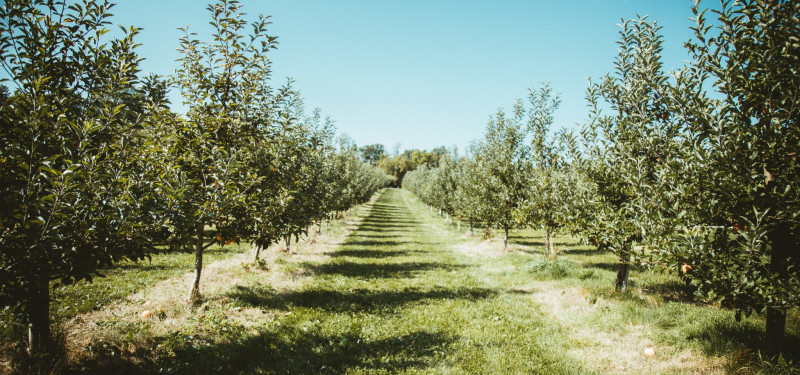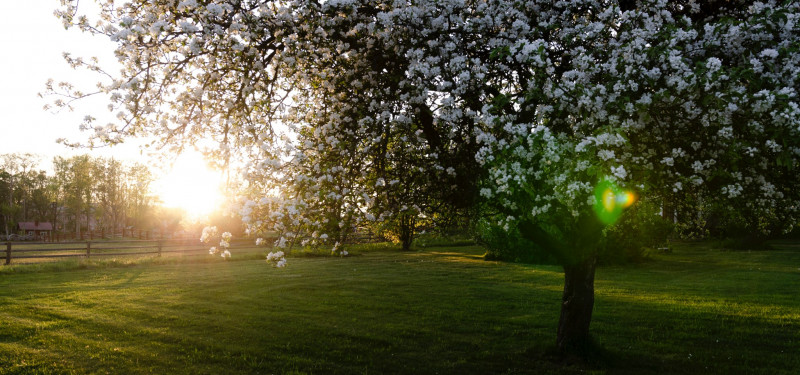Cultivating Fruit Trees: A Beginner's Guide to Blossoming Gardens
Embarking on the journey of growing fruit trees in your garden is a rewarding endeavor that promises not just a harvest but a delightful and fulfilling experience. For beginners stepping into the world of orchard cultivation, here are some invaluable tips to ensure your foray into gardening bears fruit—literally!
Selecting the Right Varieties:
Begin your fruit tree adventure by choosing varieties that align with your climate, soil, and personal preferences. Opt for beginner-friendly trees like apple, pear, or cherry, known for their resilience and ease of cultivation. Local nurseries can offer insights into varieties that thrive in your specific region.
We will look more closely to cherry and dwarf fruit trees later on while still giving you some tips on how you should go about gardening them.
Understanding Soil and Sunlight:
Before planting, acquaint yourself with your garden's soil composition. Most fruit trees prefer well-drained soil rich in organic matter. Additionally, assess sunlight patterns in your garden; fruit trees generally thrive in areas with ample sunlight, ensuring optimal photosynthesis and robust growth.
Planting with Care:
When the time comes to plant your chosen fruit trees, do so with precision. Dig a hole twice the width of the root ball, ensuring it's not too deep. Proper spacing between trees is vital to allow for healthy growth. Introduce organic matter into the soil to enhance fertility, offering your trees an ideal environment to establish strong roots.
Regular Watering and Mulching:
Consistent watering is key, especially during the initial stages of tree establishment. Adequate moisture promotes healthy root development. Apply a layer of organic mulch around the base of your fruit trees to retain moisture, suppress weeds, and regulate soil temperature.
Pruning for Prosperity:
While pruning might seem daunting, it's a crucial aspect of fruit tree care. Focus on removing dead or damaged branches to encourage a strong framework. Regular pruning, particularly during the dormant season, helps maintain shape, improve air circulation, and minimize disease risks.
Pest and Disease Awareness:
Stay vigilant for signs of pests and diseases. Regular inspections allow for early detection and intervention. Consider organic remedies like neem oil or insecticidal soap to deter pests without harming beneficial insects. Prune infected branches promptly to prevent the spread of diseases.
Fertilize Thoughtfully:
Understand the nutritional needs of your fruit trees and fertilize accordingly. Balanced, slow-release fertilizers provide essential nutrients for steady growth. However, avoid excessive fertilization, as it can lead to imbalances and potential harm.
Celebrate Patience and Progress:
Gardening is a journey, and fruit tree cultivation embodies the beauty of patience. Celebrate the milestones, from the first blossoms to the inaugural harvest. Understand that the process is as rewarding as the outcome, fostering a sense of connection with nature and the cycles of growth.
Embarking on the cultivation of fruit trees is a venture into a world of natural abundance and fulfillment. By incorporating these beginner-friendly tips into your gardening repertoire, you pave the way for a flourishing orchard that not only yields delicious fruits but also becomes a source of joy and pride in your garden oasis. Happy gardening!
Cultivating Joy: A Guide to Growing Dwarf Fruit Trees in Your Garden
Embarking on the delightful journey of growing dwarf fruit trees in your garden opens up a world of possibilities for a bountiful harvest and a charming landscape. For beginners venturing into the realm of petite orchards, here are some valuable tips to ensure your experience is fruitful and fulfilling.
Choosing the Right Varieties:
Kickstart your dwarf fruit tree adventure by selecting varieties suited to your climate and space constraints. Dwarf apple, peach, or cherry trees are excellent choices for smaller gardens. Research local nurseries for compact varieties known for their adaptability to your specific region.
Optimal Containers and Soil:
Dwarf fruit trees are well-suited for containers, making them ideal for limited spaces. Choose pots with adequate drainage and use a high-quality potting mix enriched with organic matter. This ensures proper aeration and provides essential nutrients for your compact orchard.
Sunlight and Placement:
Just like their larger counterparts, dwarf fruit trees thrive in sunlight. Ensure your garden provides at least 6-8 hours of direct sunlight for optimal growth. Place containers strategically to maximize sunlight exposure, fostering robust photosynthesis and vibrant, healthy trees.
Pruning for Size and Shape:
Pruning plays a pivotal role in maintaining the compact size and desirable shape of dwarf fruit trees. Regularly trim away excess growth, focusing on creating an open canopy for better air circulation. This not only controls the size but also minimizes the risk of diseases.
Mindful Watering:
Consistent and mindful watering is crucial for the well-being of your dwarf fruit trees. Container plants tend to dry out faster, so check the soil regularly and water when it feels slightly dry. Use a saucer under the containers to catch excess water, preventing root rot.
Fertilize with Care:
Dwarf fruit trees benefit from balanced fertilization. Use a slow-release fertilizer designed for fruit trees, and apply it in spring when the growing season begins. Avoid over-fertilizing, as dwarf trees are more sensitive to nutrient imbalances.
Protecting Against Pests:
Despite their size, dwarf fruit trees can attract pests. Regularly inspect your trees for signs of insects, and consider using organic pest control methods like neem oil or insecticidal soap. Prune away any affected branches promptly to prevent further infestation.
Harvesting and Enjoying:
Celebrate the joy of harvesting your dwarf fruit trees when the time comes. Since these trees bear fruit earlier than their larger counterparts, monitor their progress closely. Harvest when the fruits are ripe, and savor the reward of your gardening efforts.
Growing Your Garden Paradise:
Growing dwarf fruit trees is not just about cultivation; it's about creating a garden paradise in limited space. These petite orchards offer the beauty of blossoms, the joy of harvest, and the satisfaction of nurturing life. By incorporating these tips, you'll embark on a journey that brings the magic of fruit-bearing trees into the heart of your garden. Happy gardening!
Cherry Blossoms and Bounty: A Guide to Gardening Cherry Trees
Embarking on the enchanting journey of gardening cherry trees brings forth the promise of delicate blossoms and a bountiful harvest. Whether you're a seasoned gardener or a newcomer to the world of fruit trees, here are some tips to ensure your cherry tree cultivation is a flourishing success.
Choose the Right Variety:
Start your cherry tree venture by selecting a variety suited to your climate and garden space. Sweet cherries, such as Bing or Stella, are prized for their succulent flavor, while sour cherries like Montmorency are excellent for baking. Research local nurseries for varieties well-adapted to your region.
Optimal Sunlight and Soil:
Cherry trees thrive in full sunlight, so choose a location in your garden that receives at least 6-8 hours of direct sun each day. Ensure well-drained soil with a slightly acidic to neutral pH. Amending the soil with organic matter enhances fertility and drainage, creating an ideal environment for your cherry tree to flourish.
Planting with Care:
When planting your cherry tree, dig a hole twice as wide as the root ball and at the same depth. Ensure the roots are spread out, and backfill with enriched soil. Water the tree thoroughly after planting to settle the soil. Consider planting more than one cherry tree for optimal cross-pollination and increased fruit production.
Pruning for Shape and Health:
Regular pruning is essential for shaping your cherry tree and maintaining good air circulation. Prune away dead or diseased branches, and create an open canopy to allow sunlight to reach all parts of the tree. Early spring is an ideal time for pruning, promoting vigorous growth.
Watering Routine:
Cherry trees require consistent watering, especially during dry spells. Ensure the soil remains consistently moist but not waterlogged. A layer of organic mulch around the base of the tree helps retain moisture, suppress weeds, and maintain a cool root environment.
Fertilize Mindfully:
Cherry trees benefit from balanced fertilization. Apply a well-balanced fertilizer in early spring before new growth begins. Be cautious not to over-fertilize, as this can lead to excessive foliage growth at the expense of fruit production.
Protecting Against Pests:
Cherry trees are susceptible to pests like aphids and cherry fruit flies. Regularly inspect your tree for signs of infestation, and consider using natural predators like ladybugs. Horticultural oils or insecticidal soaps can be effective for controlling pests without harming beneficial insects.
Harvesting the Bounty:
The joy of gardening cherry trees culminates in the much-anticipated harvest. Cherries are typically ready for picking in late spring to early summer. Harvest when the fruit is fully colored and firm. Enjoy them fresh, bake them into delectable treats, or preserve the harvest for year-round delights.
Cultivating Cherry Dreams:
Gardening cherry trees is a journey of beauty and bounty. By incorporating these tips into your care routine, you'll not only witness the splendor of cherry blossoms but also savor the rewards of a flourishing harvest. Happy gardening!


